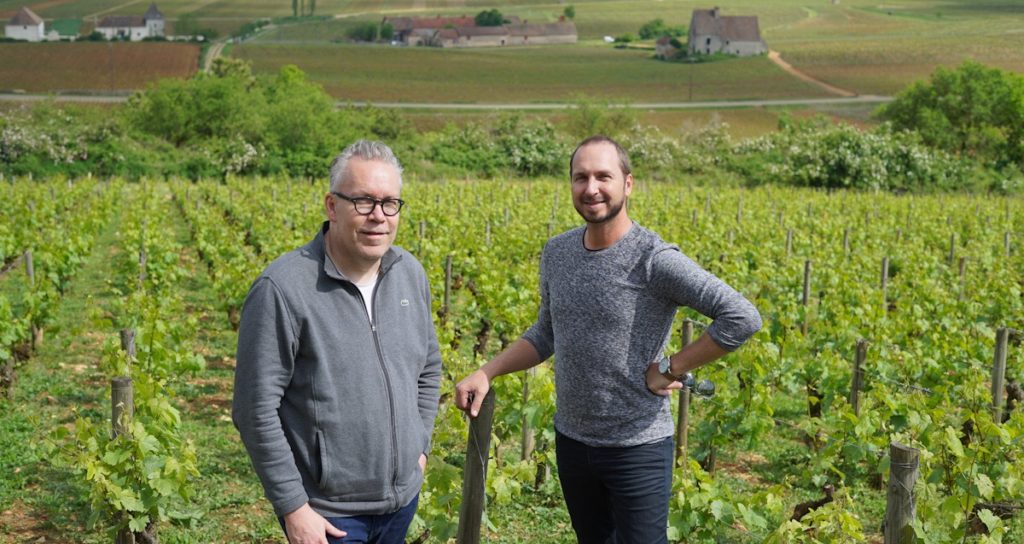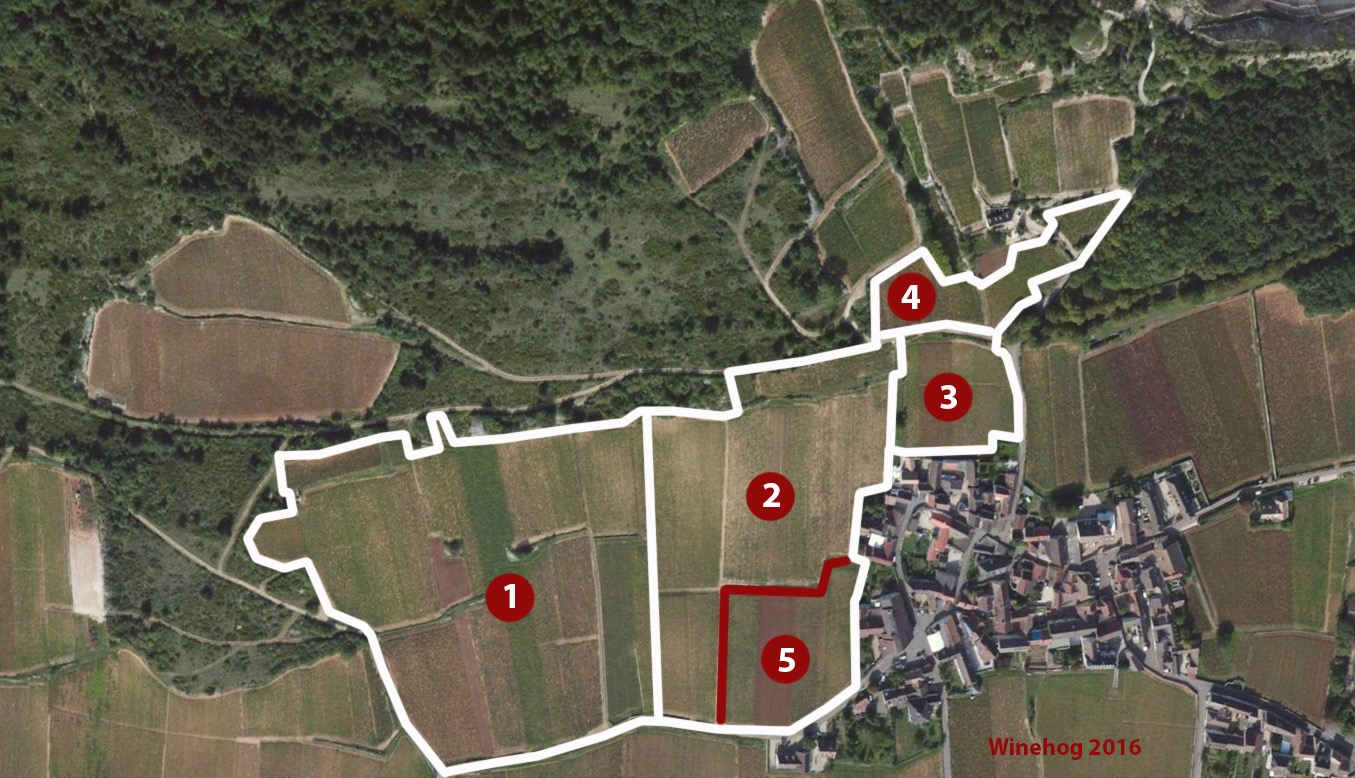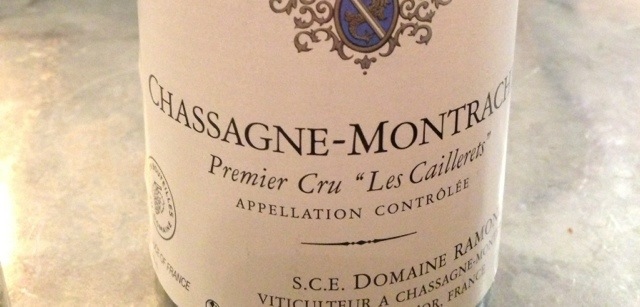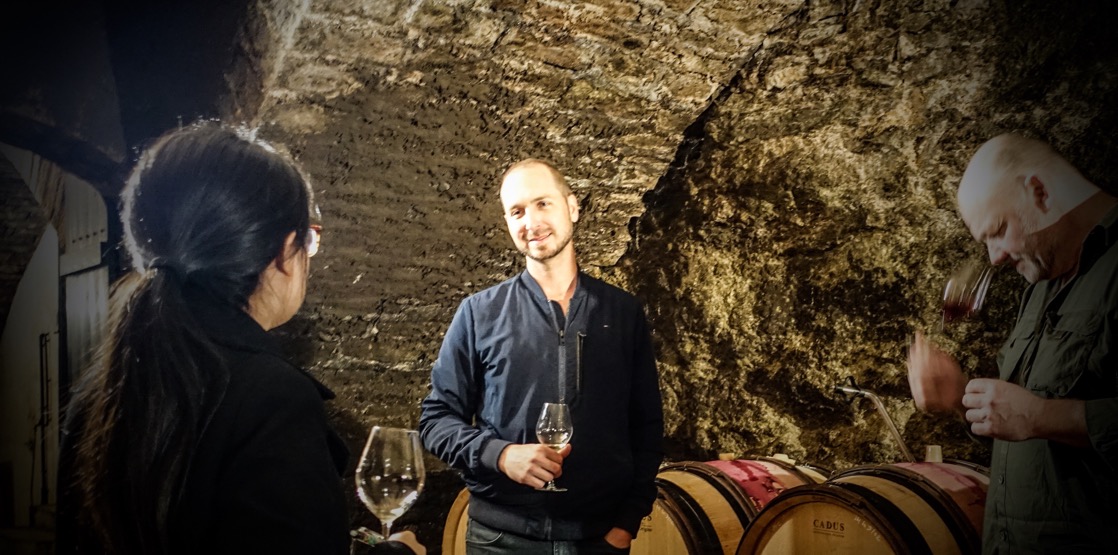Travelling and experiencing Burgundy for 20-some years does leave marks, scars and impressions.
I’ve decided to draw on that experience to take a different (for me), yet also well-known, approach to discovering Burgundy’s vineyards: I will explore my favourite vineyards of a given appellation – the secret gems, and the most hedonistic delights.
The first exploration will be of Chassagne-Montrachet, primarily a 1er-cru appellation with a few grand cru stars on its border with Puligny-Montrachet.
Chassagne in the south
Let’s face it: Chassagne-Montrachet was the last of the “big” appellations to settle into its current stride. It was very much a red (pinot noir) appellation when the first important books on Burgundy were written – Lavalle (1855), Danguy & Aubertin (1882) and Rodier (1920). And whereas Puligny has uprooted or over-grafted most of its red vineyards, Chassagne still has quite a few.
In 1976, around 60% of Chassagne’s production was red wine. This had fallen to around 30% by 2010 – a dramatic change that seems to be continuing, with red vineyards down to around 25% these days.
But in the context of history, this is a rather recent development if you – like I – consider the 1970s recent.
There are loads of 1ers crus in Chassagne – 48 in total – and furthermore some have different levels of name. For example, a wine can be called Morgeot, but in other cases also carry the name of a specific, highly regarded, subdivision of the Morgeot vineyard – Fairendes for instance.
Then there are three grands crus belonging in total or in part to Chassagne: Criots-Batard-Montrachet (100% Chassagne), Batard-Montrachet (49% Chassagne), and the southern half of Montrachet.
My Chassagne favourites
Chassagne is a large, diverse appellation, and most of us have our favourite vineyards.
I have two favourite areas; both are high on the slope, the first above and just south of the village, an area with the potential for great finesse and hedonistic joy.

My second preferred area is near the iconic Montrachet, where one finds some exciting gems of mineral greatness.
Chassagne-Montrachet Les Caillerets
Les Caillerets is located south and above the village of Chassagne-Montrachet (see map below). It’s a large 1er cru – 10.86 ha – that consist of four terroirs: En Caillerets (1), with 5.11 ha; Chassagne (3), 1.14 ha; Les Combards (4) has 0.65 ha; and Vigne Derriere (2) consists overall of 3.76 ha. There is also a clos inside Vigne Derriere called Clos du Caillerets (5).

It is a refined vineyard producing wines with a delightful, hedonistic feel. While not the most concentrated of the Chassagne 1ers crus, Caillerets is a brilliant, full wine with a lovely, serene minerality, almost creamy in texture and with a sensual feel.
I have many favourites from this vineyard, but if I have to pick one, it would be from Domaine Ramonet. But please note: It’s the regular cuvee, not the wine from the Clos du Caillerets corner of the vineyard. The regular cuvee is from Vigne Derriere and En Caillerets. This preferred wine is perhaps not better, but it has a silkier, more hedonistic glow which is more important to my taste.
Domaine Ramonet Chassagne Les Caillerets 2010
The Chassagne Caillerets 2010 is a truly gorgeous wine. On the nose, lovely, ripe yellow fruit with notes of pear, melon and a hint of anise. The finely grained, stony minerality adds to the complexity of the bouquet – very refined and a bit understated. On the palate there is very fine, pure fruit and great energy, finely focused and refined with an almost silky texture. The finish is long and nuanced, with delicate minerality and playful acidity. A 2010 statement from Ramonet: Chassagne 1er cru doesn’t come much better than this.
(Drink from 2020) – Very Fine+ (94p) – Tasted 19/03/2013

For hedonistic pleasure, Caillerets is clearly the go-to wine for me.
Blanchot Dessus, the once-upon-a-time Montrachet, for its mineral intensity
There is no doubt that the grands crus are the top wines of Chassagne. But there is one 1er-cru vineyard that can create depth and intensity almost equal to the Montrachet hill.
The vineyard – Blanchot Dessus – is located just south of Le Montrachet, Chassagne’s part of the legendary grand cru.
Blanchot Dessus is a small, relatively unknown vineyard with only a few owners, frequently being overlooked compared to its more famous grand-cru neighbours.
Chassagne-Montrachet Blanchot Dessus
Blanchot Dessus is located just south of Montrachet; i.e. on the Chassagne side of that vineyard (see map below). It’s “above” (actually west of) Criots-Batard-Montrachet, and is one of the smallest 1ers crus in Chassagne, with a total area of 1.17 ha.

A part of Montrachet – and then?
Looking at the cadastre maps from 1839 we see that the area today called Blanchot Dessus was part of the then-rather-vast Montrachet or Mont Rachet (map below).

This is confirmed by the 1861 classification,1 where plots 34-48 are included as a part of Le Montrachet despite being classified only as 2e Classe, as opposed to the rest of the Montrachet vineyard that was labeled 1er Classe.
On the 1839 cadastre map below, we see that plots 34-48 constitute what we know today as Blanchot Dessus.

So Blanchot Dessus was in fact been a part of Montrachet, at least until 1861. And this leads to the next question: When was it separated from Montrachet? Danguy and Aubertin2 mention Blanchot in their 1892 book (p. 36) as deuxiéme cuvée. This is the first mention of the Blanchot vineyard I have found, but unfortunately Danguy and Aubertin don’t provide any information about the vineyard’s area.
Rodier3 doesn’t mention Blanchot at all; he is rather superficial in his description of the Chassagne terroirs, especially those producing white wine in 1920.
Indirectly, however, Rodier does confirm that Blanchot Dessus was parted from Montrachet before 1920, as the area of the Montrachet vineyard (Chassagne and Puligny sections combined) at that point was 7.4951 ha, compared to the current 8.00 ha. This shows that Blanchot Dessus was separated from Montrachet before he wrote the final edition of his book in 1920, otherwise the vineyard would have been more than 8 ha at that point.
This confirms by inference that Blanchot Dessus was created at some point between the 1861 classification and 1892, when Rodier published the first edition of his book, which he subsequently revised into its final form in 1920.
In the 1920s and ’30s, there were some adjustments to the boundaries of the grands crus, and when the classification was finally settled in 1937 and 1939, Blanchot Dessus missed out on grand-cru status.
Should Blanchot have been a grand cru? Perhaps; but the rather diverse nature of the the vineyard could have prevented this, as there is little doubt that at least the plots on the border with Montrachet have unique qualities that could justify grand-cru status.
The current owners of Chassagne-Montrachet Blanchot Dessus
Accoring to my research, there are currently seven owners of Blanchot Dessus. The largest is Domaine Coffinet-Duvernay, with 0.3870 ha.
1. Daviot-Perrin – 0.2938 ha
2. Jean-Claude Bachelet – 0.1242 ha
3. Morey-Coffinet – 0.0640 ha
4. Bruno Colin – 0.1335 ha
5. Jean-Noel Gagnard – 0.1262
6. Coffinet-Duvernay – 0.3870
7. Owned by a notary – 0.0428 ha
The map below shows the current ownership of the different plots. Please note not all of these have been confirmed, so it’s, as always, a work in progress.

Blanchot Dessus – the wine
The best wines from Blanchot Dessus are very fine indeed, with an almost regal, airy refinement. From some producers it does remind me of Montrachet, although lacking a bit of the length, power and weight of that wine.
The minerality is more finely grained than in Batard, and reminds me more of Montrachet or perhaps Criots-Batard. It’s a very powerful wine for a Chassagne 1er cru, as it has much of its grander neighbour’s intensity and length.
The plots closest to Montrachet are in my experience the most refined, although the Coffinet-Duvernay plot at the southern end does produce some remarkably cultured wines.
The middle plots seem to produce weightier wines with more Chassagne character; very powerful with some grand cru oompf, but perhaps lacking a bit of refinement.
At its best, this vineyard produces grand-cru quality. The best examples are both intense and very refined.
Domaine Morey-Coffinet Chassagne Blanchot Dessus 2012
Readers know I’m not a great fan of 2012 whites. It’s not a poor vintage by any standard, but I do feel it lacks a bit of energy compared with 2010 and 2014. This is, however, not the case with the Blanchot Dessus from Morey-Coffinet: It is a tremendously vibrant glass for the vintage. The nose is expressive and detailed, with fine, intense minerality, oak discrete but present, and cool white and yellow fruit. On the palate, it is very vibrant and refined for a 2012, with its mineral focus offering tremendous length. An excellent wine from this tremendous plot just south of Comte Lafon’s plot of Montrachet. One of the best, if not the best, plot in Blanchot Dessus.
(Drink From 2022) – Very Fine+ (93-95p) – Tasted 28/03/2017

References & Sources:
- Batault-Morot, E. Plan statistique des vignobles produisant les grands vins de Bourgogne. (1861)
- M.R. Danguy et M. Ch. Aubertin, Les Grands Vins de Bourgogne (1892)
- Camille Rodier, Le Vin de Bourgogne (1920)
- Jasper Morris, Inside Burgundy: Cote de Beaune

 - A true vin d’émotion – a Burgundy of passion
- A true vin d’émotion – a Burgundy of passion - A truly hedonistic wine – lively and enjoyable
- A truly hedonistic wine – lively and enjoyable - A vivacious wine for pure indulgance
- A vivacious wine for pure indulgance - A potential vin d´émotion - frais et léger
- A potential vin d´émotion - frais et léger
Thoughts on the vineyard Chassagne-Montrachet Les Embazees 1er Cru? Are you familiar with the producer Lucien Belland-Tremeau? I think based in Santenay. Not 100% positive. Total Wine and More (A US-based wine store) did a Concierge offering on this vineyard from this producer for the 2019 offering. I thought I would give it a try. Arrives later this Spring.
Chassagne-Montrachet Blanchot Dessus – I’m trying to think of another vineyard that might have at one time been GC. or had an opportunity to be a GC and declined Nuits-Saint-Georges, Les Saint-Georges? Perhaps, Gevrey-Chambertin Le Clos Saint-Jacques? or Chambolle-Musigny Les Amoureuses? Any thoughts on this question?